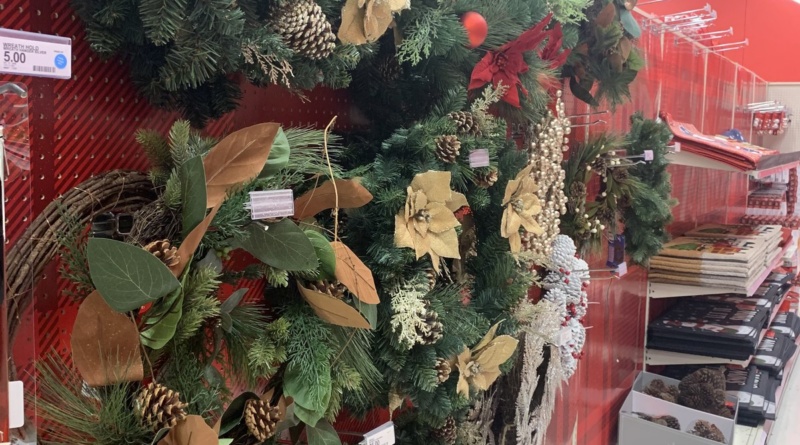OPINION: Artificial Christmas trees are better than real
PHOTO: Artificial Christmas decorations other than trees, like wreaths and wrapping vines, are also on sale in many stores.
By Jaspreet Baath,
BlueDevilHUB.com Editor–
When shopping for decorations for this year’s festivities, the better option for your pocket along with the environment is to celebrate the season with artificial decorations rather than real ones.
According to the American Christmas Tree Association, in 2018 over 32.8 million real and 23.6 million fake Christmas trees were purchased with shoppers spending over $2 billion.
While depending on personal preferences, real or fake trees offer different perks and disadvantages. To many families, real trees add to the holiday spirit as they produce a natural pine scent and create a family tradition of going to choose a tree.
Fake trees, on the other hand, require far less maintenance, reduce allergies and are more versatile as they come in all shapes and sizes.
Although all of these factors are subjective to a person’s own likings and dislikings, the most crucial point that makes fake trees a better option is that they are reusable which provides benefits in the long run.
One of these benefits is the financial savings that come with reusing a fake tree. According to the American Christmas Tree Association, in 2018 fake trees cost an average of $104 as opposed to only an average of $78 for a real tree.
While initially, the cost of fake trees may be higher, they can last up to 10 years, which makes them a far cheaper alternative than buying a real one every year.
In addition, according to Seasonal Tree Trade Group spokesman Doug Hundley, growing real trees are getting harder and harder each year due to labor shortages and “inclement weather patterns” across the U.S. This can additionally increase the cost of buying a real tree in the future as well.
Another major benefit that comes from reusable fake trees is the fact that they are better for the environment.
Buying synthetic factory produced and shipped trees may not seem beneficiary for the environment, but according to the American Christmas Tree Association, by reusing them, their total pollution comes out to less than a harvested tree in five years.
This is due to the fact that the majority of real trees found in major retailers are shipped across the U.S. and end up releasing more carbon, according to PE Americas, a paid research company
In addition, according to the same study, over 70 percent of Americans do not correctly recycle their real tree which ends up adding to the carbon footprint as well.
While considering these factors, it may seem that everyone should buy a fake tree, however, in some cases, it may not be the best option. For people with little storage space or desire for maintaining “holiday traditions” a real tree might be the way to go.
In addition, those that are fortunate enough to live near local tree farmers may actually benefit the environment as long as the tree is grown pesticide-free and recycled locally.
However, for the vast majority of shoppers who are interested in saving money during the holiday season or those who want to reduce their environmental impact, buying or reusing a fake tree is the way to go for this and future holiday seasons.



